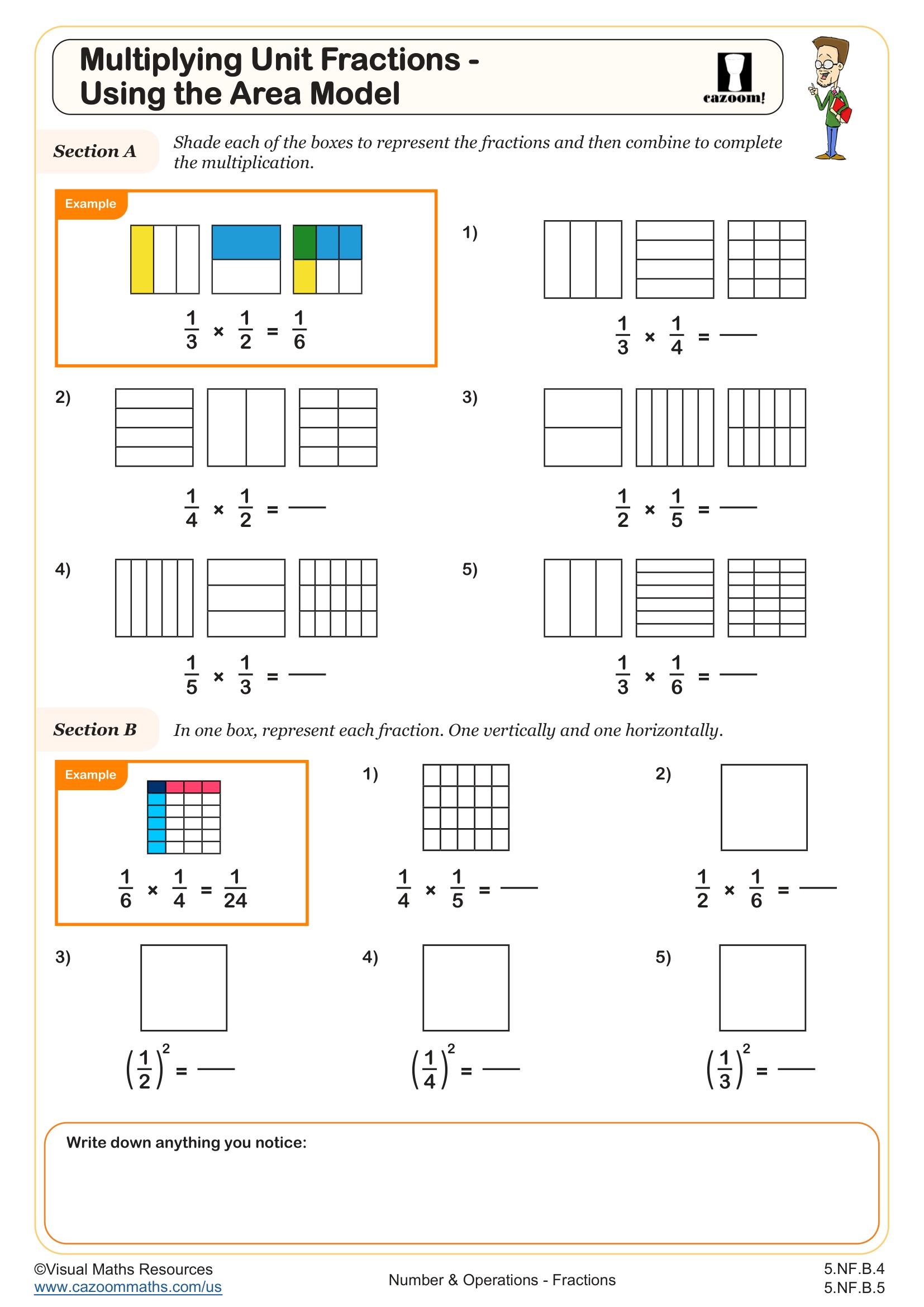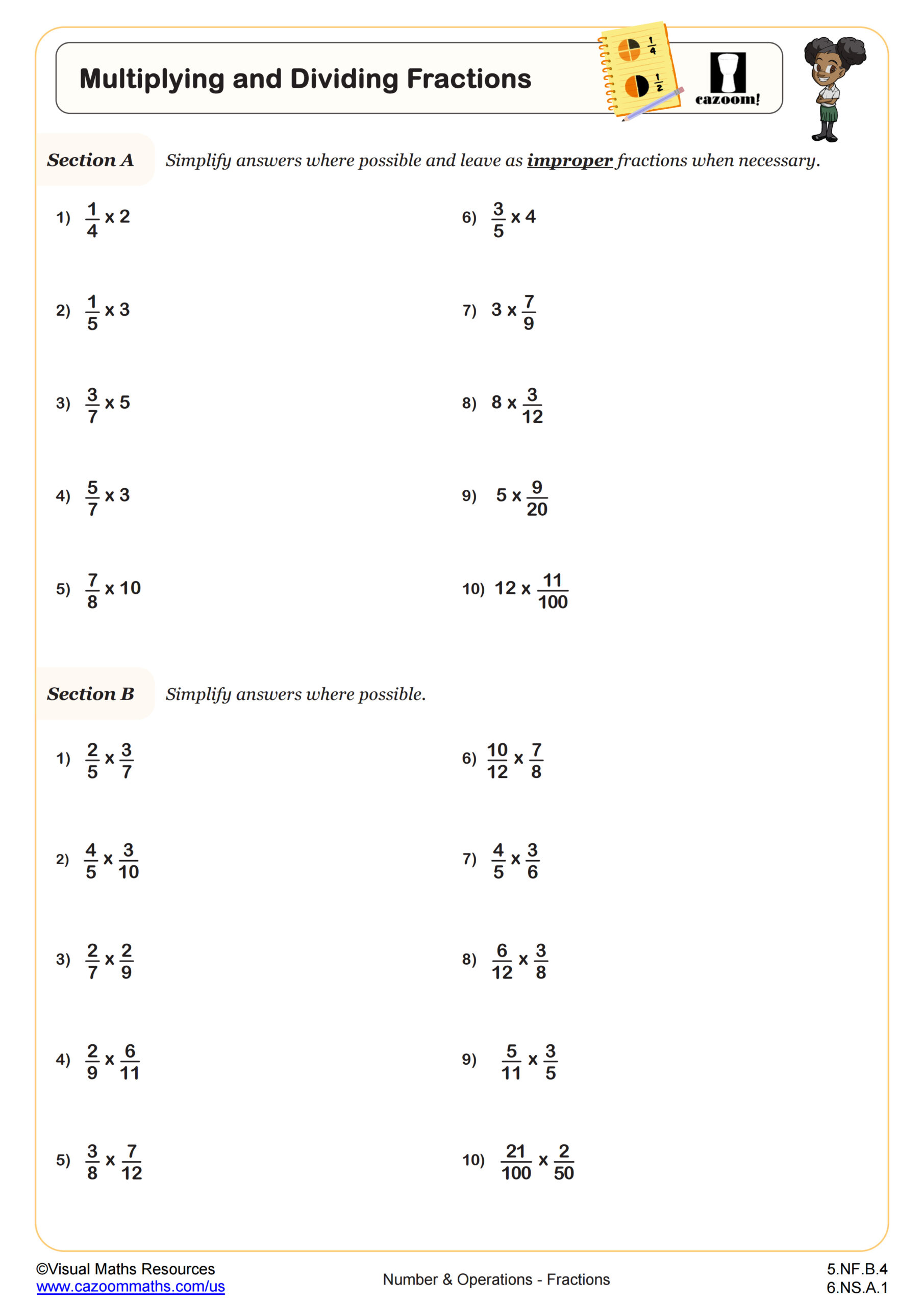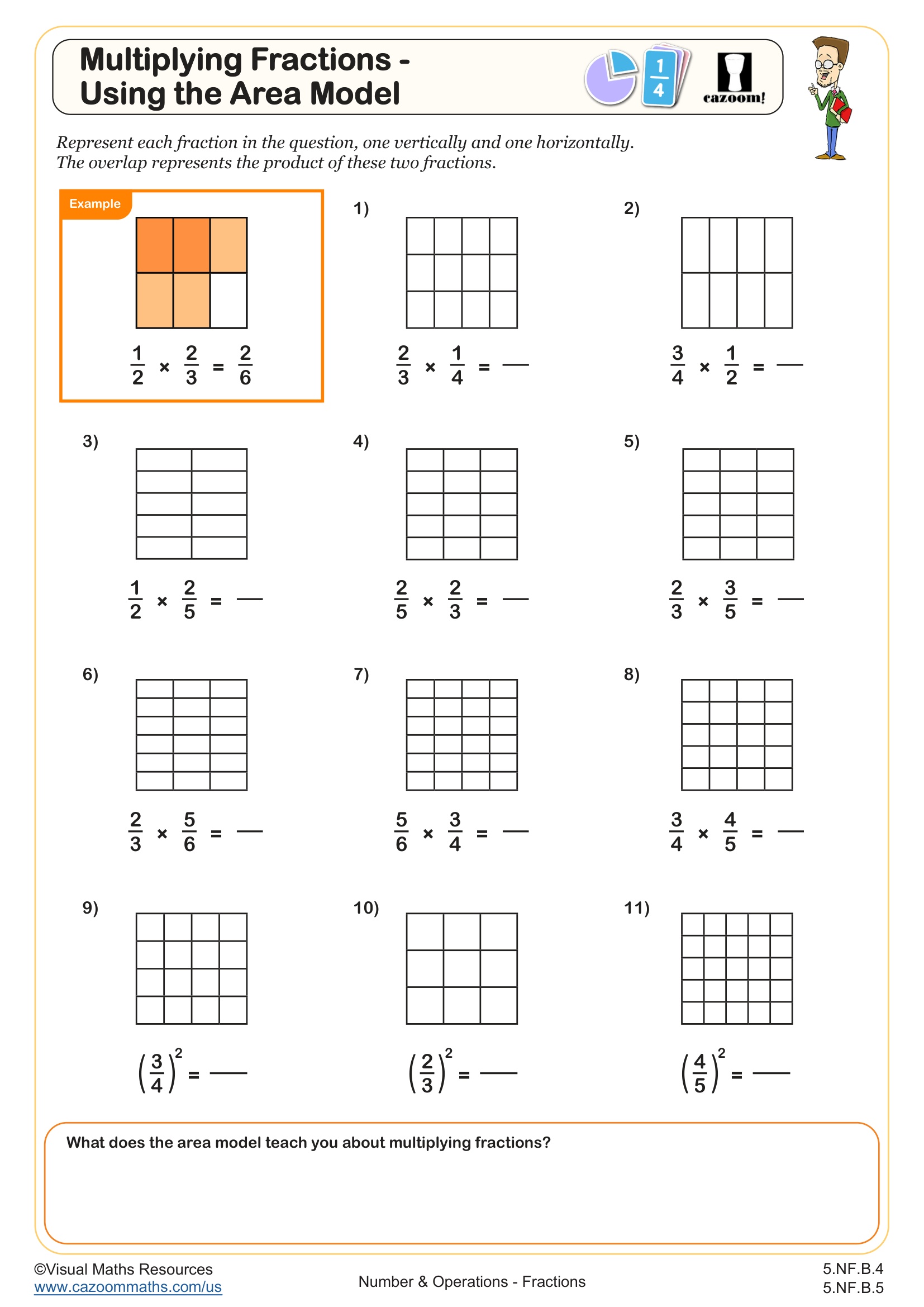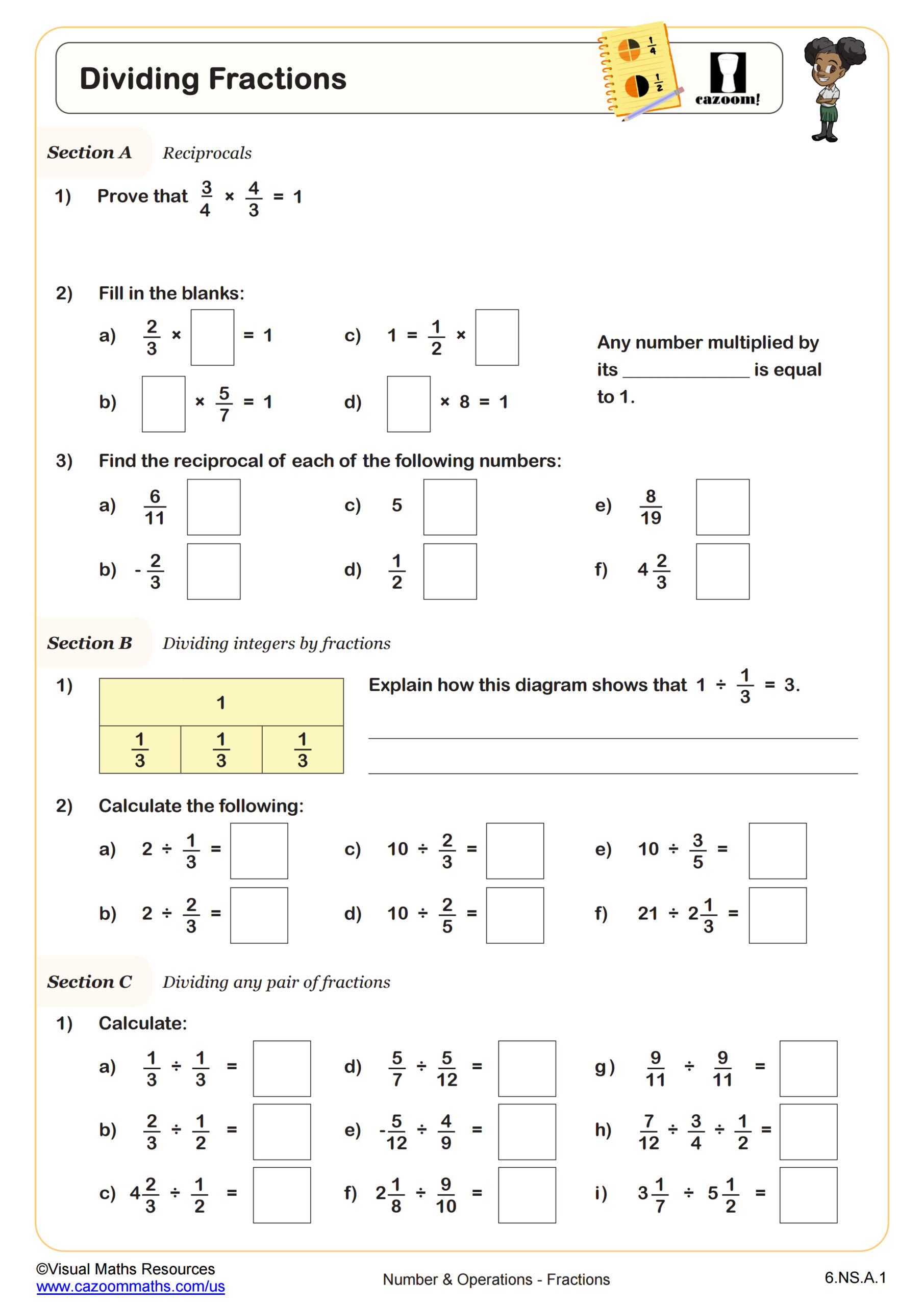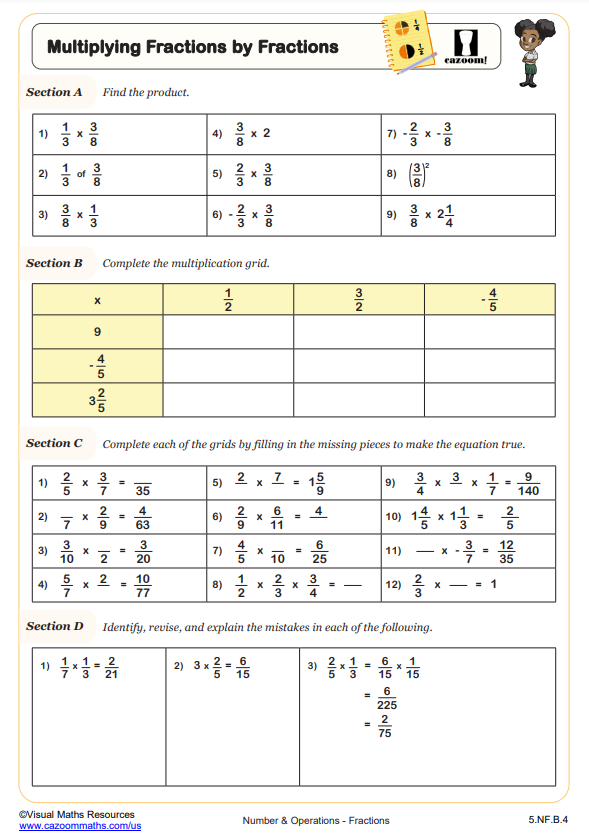Multiplying Unit Fractions - Using the Area Model WORKSHEET
Interpret multiplication as scaling (resizing), by: - Explaining why multiplying a given number by a fraction greater than 1 results in a product greater than the given number (recognizing multiplication by whole numbers greater than 1 as a familiar case); explaining why multiplying a given number by a fraction less than 1 results in a product smaller than the given number; and relating the principle of fraction equivalence a/b = (n×a)/(n×b) to the effect of multiplying a/b by 1. - Comparing the size of a product to the size of one factor on the basis of the size of the other factor, without performing the indicated multiplication.
Multiplying Unit Fractions - Using the Area Model WORKSHEET DESCRIPTION
Using the area model to multiply fractions is a visual and intuitive method that helps students understand the concept of fraction multiplication. This method involves drawing a rectangle to represent the whole and then dividing it into smaller parts vertically and horizontally to represent the fractions being multiplied.
Section A and B begin with an example. In Section A, each fraction is represented in its own rectangle before being combined in order to complete the multiplication across five questions. Both the question and answer is represented in one rectangle in section B and here students are required to divide the whole into the correct fractions themselves.
All fractions to be multiplied are until fractions and questions include squaring fractions.
At the end of the worksheet, pupils are asked to comment on anything they notice.
